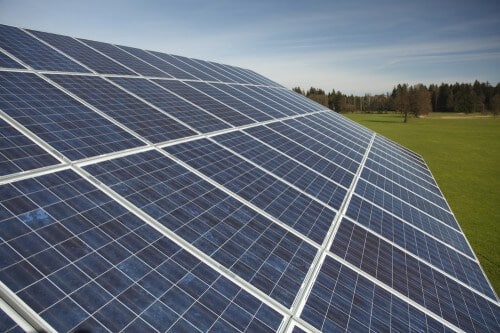Flexible and soft organic materials are the key to cheap solar cells that can be printed at room temperature - a completely different world from the traditional world that includes expensive processes based on current silicon technologies.

Researchers have succeeded in fine-tuning the coherence capacity of organic nanostructures thanks to the surprising discovery of wave-like electrons in organic materials, thereby revealing the key to creating "long-lived charges" in organic solar cells - a discovery that could bring about a revolution in the field of solar energy.
Using an extremely fast camera, researchers claim that they were able to observe the very first moments after the absorption of light by organic and synthetic nanostructures and found that the electric charges are not only created quickly but also spread very quickly over a large distance - a phenomenon that occurs due to their nature - The wave of electrons governed by the fundamental laws of quantum mechanics.
This result surprised the scientists since it was considered to be limited to "perfect" and expensive inorganic structures only, and not to flexible and soft organic materials, which are the key to cheap solar cells that can be printed at room temperature - a completely different world from the traditional world that includes expensive processes based on the current technologies of silicon.
The study, which was just published in the prestigious scientific journal Science, sheds new light on the mysterious mechanism that allows positive and negative charges to effectively separate from each other - a critical question that challenges scientists to this day - new light that moves scientists one step closer to effectively mimicking the superior ability In nature to take advantage of sunlight, the process of photosynthesis, which has evolved over thousands of years. "This is a very surprising result. Such a quantum phenomenon is usually limited to perfect crystals of inorganic semiconductors, and no one expects to notice these phenomena also in organic molecules whose structure is much more distorted and messy," said Dr. Simon Gélinas, from the University of Cambridge and the University of California, Santa Barbara.
During the first few femtoseconds (millionth of a billionth of a second) each charge is dispersed among many molecules instead of being confined to a single molecule. This phenomenon, known as "spatial coherence", allows the charge to travel a distance of several nanometers in a very short time and escape from the opposite charge - an initial step that is probably responsible for the creation of long-lived charges, the researchers explain. This mechanism can be used to generate electricity from chemical reactions. By carefully organizing the structure of the molecules, the researchers found that it is possible to adjust the spatial coherence and even increase or decrease this long-distance separation. "Perhaps the most important thing is that the results suggest that because the process is so fast it is also energy efficient, which could lead to the development of solar cells that provide more energy," said the lead researcher.
The news about the study

8 תגובות
There are places such as Mitzpe Ramon that is already covering itself today (actually already in 2011) https://www.hayadan.org.il/no-avoidance-of-solar-panels-261211/
But if you ask the Green Blog and Co. it will never be economical and will always require 100% backup from other sources (even though experience says that a mix of alternative energy only requires 25% backup for the night, winter and in the case of combination with wind energy - when the wind is weak.)
Question - how many years of development stand between us and solar panels with this technology in commercial production...?
Usually the titles of the above writer are bombastic similar to this one. not nice.
X
Irradiation of light on an organic material creates an exciton (a bound pair of an electron and a hole),
If I understood correctly, they expected that the organic material would be a semi-conductor with such a large gap
that the excitons will be produced in the gap. Apparently the excitation caused the creation of an electron-hole pair
free and thus created free charges but from here to the name of the article,
"Wave-like electrons in organic materials will revolutionize the field of solar energy"
The distance is great. It is not surprising that the electrons are waves in a semiconductor this follows
From Bloch's theorem.
The innovation probably mainly concerns the ability to follow the separation of charges in organic materials as a result of light irradiation, while imitating the first step in the natural photosynthesis process, on a time scale of femtoseconds.
The essence of the "innovative" discovery is certainly not clear. The fact that electrons in a lattice can be described
Kagalim has been known since the time of Felix Bloch who published it in 1928. It is possible that in organic materials
They expected to get Anderson localization as a result of disorder in the lattice structure. A phenomenon in which disorder
It leads to the localization of electrons, but on its surface an electron in a lattice is a wave and not a localized particle.
Not "wave-like electrons" but the wave nature of the electrons; Not even the "wave-like nature of the electrons" but the wave nature of the electrons... particle-wave duality like that of the photon, also exists for the electron.
thousands of years?! Photosynthesis began to develop a little before….